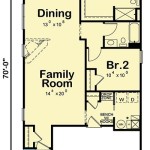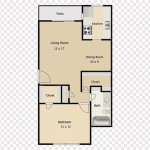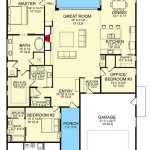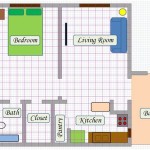How Do I Get Floor Plans For My House?
Obtaining accurate and comprehensive floor plans for a house is a crucial step for a variety of purposes, ranging from renovation projects and interior design to real estate transactions and simply understanding the property's layout. The process can vary in complexity and cost, depending on the house's age, availability of existing documentation, and the specific level of detail required. This article explores the various methods for acquiring floor plans, outlining the advantages and disadvantages of each, and providing guidance on selecting the most appropriate approach for a given situation.
The fundamental purpose of a floor plan is to provide a scaled diagram of a building, viewed from above, showing the arrangement of rooms, walls, doors, windows, and other structural elements at a specific level. It serves as a visual representation of the house's spatial organization and dimensional relationships, enabling accurate planning and informed decision-making.
1. Researching Existing Documentation
The initial step in obtaining floor plans should always involve a thorough search for existing documentation related to the property. This approach can potentially save significant time and expense compared to creating new plans from scratch. Several potential sources of existing floor plans exist, each with varying degrees of accessibility and accuracy.
One primary resource is the local government's building department or planning office. These departments often maintain records of building permits and architectural drawings submitted for previously approved construction or renovation projects. Accessing these records typically involves submitting a formal request and may be subject to fees. The completeness and accuracy of the plans will depend on the specific requirements at the time of the building's construction and any subsequent alterations. Older buildings may have incomplete or outdated records, or none at all.
Homeowner associations (HOAs) may also keep records of approved building plans for properties within their jurisdiction. Contacting the HOA management company or reviewing the HOA's governing documents can reveal whether floor plans are available in their archives. This option is particularly relevant for properties located in planned communities or developments with architectural control guidelines.
Another potential source is the previous homeowner or builder of the house. If the current owner has contact information for the previous owner, inquiring about any existing floor plans or architectural drawings can be a worthwhile endeavor. Similarly, if the house was recently constructed, the builder may still possess the original plans or have access to electronic files. Reviewing the closing documents from the purchase of the property sometimes yields floor plans, particularly if the property was new construction.
Mortgage lenders or insurance companies may also have copies of appraisal reports that include basic floor plans or sketches. While these plans may not be as detailed as architectural drawings, they can provide a general overview of the house's layout and room dimensions. Accessing these documents may require obtaining permission from the borrower or policyholder.
Finally, property tax records can sometimes include rudimentary floor plans or sketches used for assessment purposes. These plans are typically simplified representations and may not be entirely accurate or comprehensive. However, they can still offer a basic understanding of the house's footprint and room configuration.
2. Hiring a Professional for Measurement and Drafting
If existing floor plans are unavailable or insufficient for the intended purpose, the next option is to hire a professional to measure the house and create new plans. Architects, draftspersons, and specialized floor plan service providers offer this service. The cost and level of detail will vary depending on the chosen professional and the specific requirements of the project.
Architects possess the highest level of expertise and can provide comprehensive floor plans that meet all relevant building codes and regulations. They can also incorporate design modifications and provide guidance on structural aspects of the house. Hiring an architect is generally recommended for complex renovation projects or when obtaining permits for significant alterations.
Draftspersons specialize in creating technical drawings based on measurements and specifications. They offer a more cost-effective alternative to architects for projects that do not require extensive design expertise or structural analysis. Draftspersons can accurately measure the house and create detailed floor plans that meet specific requirements.
Specialized floor plan service providers offer a convenient option for obtaining basic floor plans for real estate marketing or interior design purposes. These services typically employ laser measuring devices and CAD (Computer-Aided Design) software to create accurate and professional-looking plans quickly. The level of detail may be limited compared to architectural drawings, but the plans are generally sufficient for visualizing the house's layout and room dimensions.
When selecting a professional for measuring and drafting floor plans, it is essential to verify their qualifications, experience, and insurance coverage. Requesting samples of their previous work and obtaining references from past clients can help ensure that they are capable of delivering high-quality plans that meet the specific needs of the project. It is also important to clearly communicate the desired level of detail and any specific requirements, such as the inclusion of furniture layouts or electrical outlets.
The process typically involves the professional visiting the property to take detailed measurements of each room, hallway, and exterior wall. They will also note the locations of doors, windows, stairs, and other structural elements. The measurements are then used to create a digital floor plan using CAD software or other drawing tools. The final floor plan is typically delivered in a digital format, such as PDF or DWG, which can be easily viewed, printed, or modified.
3. Creating Floor Plans Independently
For individuals with basic drafting skills and access to measuring tools, creating floor plans independently can be a viable option, particularly for simple houses or when only a rough sketch is needed. This approach can be the most cost-effective, but it requires careful attention to detail and a thorough understanding of measurement techniques.
The fundamental tool for creating floor plans is a measuring device, such as a tape measure or laser distance meter. A laser distance meter offers greater accuracy and convenience, particularly for measuring long distances or in rooms with limited access. A notebook and pencil are also essential for recording measurements and sketching the layout of each room.
The process involves measuring the length and width of each room, as well as the dimensions of doors, windows, and other structural elements. It is crucial to measure each wall accurately and consistently, ensuring that the measurements are taken from the same point on each wall. Taking multiple measurements and cross-checking them can help identify any errors or inconsistencies.
After measuring each room, the dimensions are transferred to a piece of paper or a digital drawing program. A scaled drawing is created, representing the layout of each room and the relationships between them. Doors, windows, and other structural elements are added to the plan, ensuring that their locations and dimensions are accurately depicted.
Several software programs are available for creating floor plans, ranging from free online tools to professional-grade CAD software. These programs offer various features and capabilities, such as the ability to create 3D models, add furniture layouts, and generate construction documents. Some popular options include SketchUp, AutoCAD, and Floorplanner.
Creating floor plans independently requires a significant investment of time and effort, particularly for complex houses or when a high level of accuracy is required. It is also essential to have a solid understanding of drafting principles and measurement techniques. However, for those with the necessary skills and resources, this approach can be a cost-effective way to obtain floor plans for personal use or simple renovation projects.
Regardless of the chosen method, verifying the accuracy of the floor plans is crucial. Comparing the plans to the actual dimensions and layout of the house can help identify any errors or inconsistencies. Addressing these issues before proceeding with any renovation or design projects can save time, money, and frustration in the long run. Ultimately, the best approach for obtaining floor plans depends on the specific needs of the project, the available resources, and the desired level of detail.

Where You Can Buy House Plans Live Home 3d

House Plans How To Design Your Home Plan

How To Read A Floor Plan With Dimensions Houseplans Blog Com

House Plans How To Design Your Home Plan

Floor Plan Creator And Designer Free Easy App

Pin On House Layout
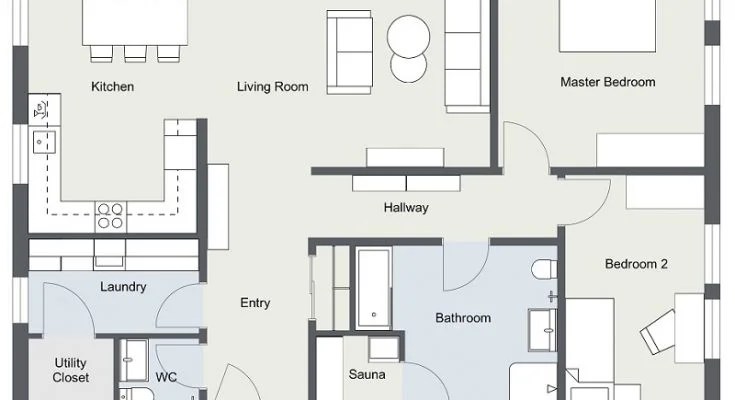
How To Find The Original Floor Plans For Your House

9 Ways To Find Floor Plans Of An Existing House Blueprints Archid

How To Read A Floor Plan With Dimensions Houseplans Blog Com

We Are Designing Your Dream House With My Design For More Please Follow Us Visit Our Plans

